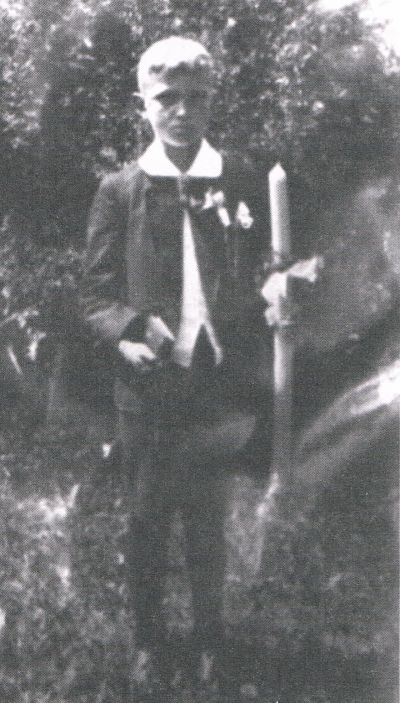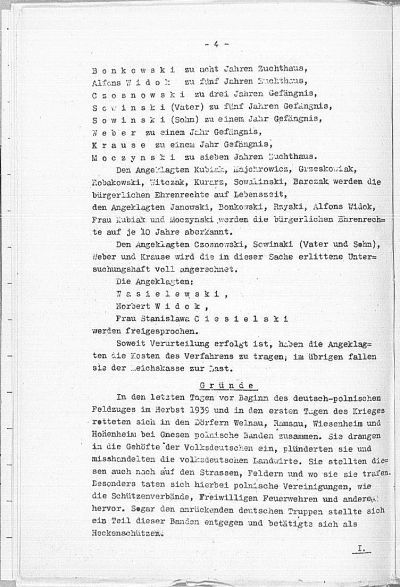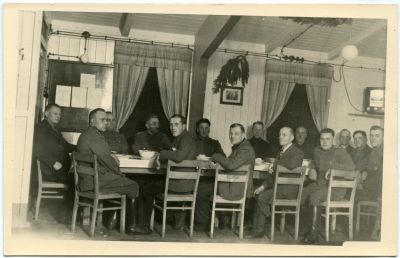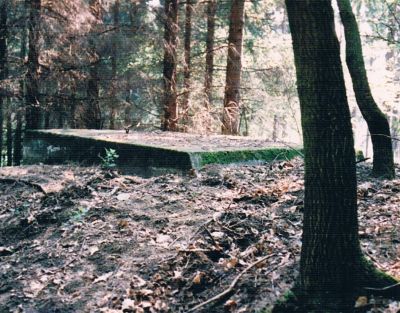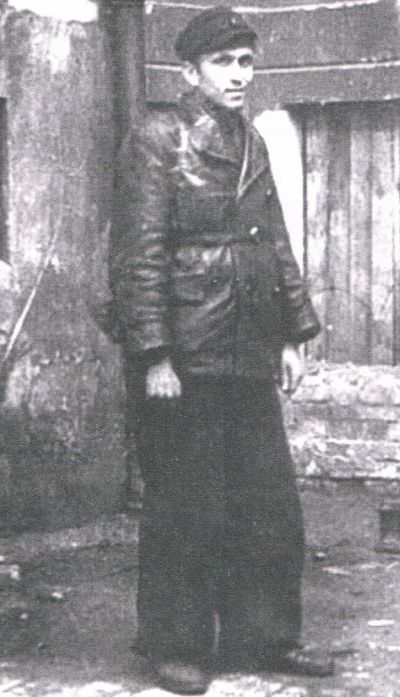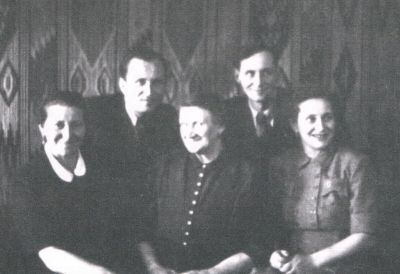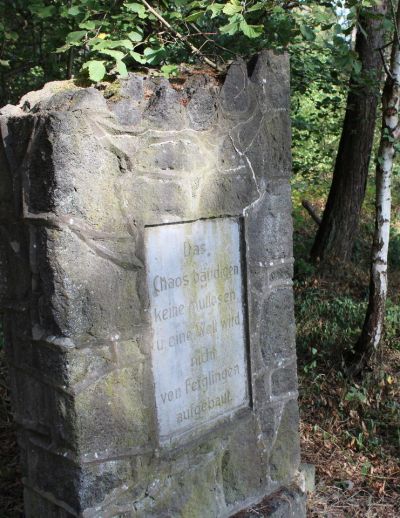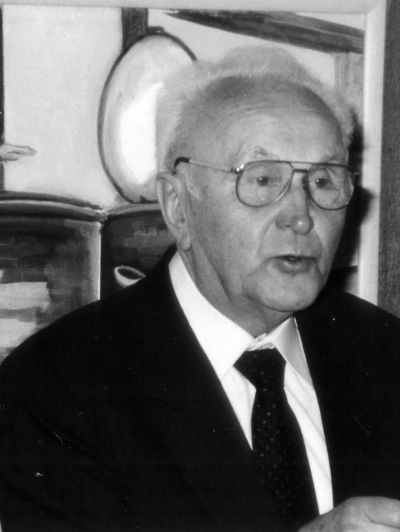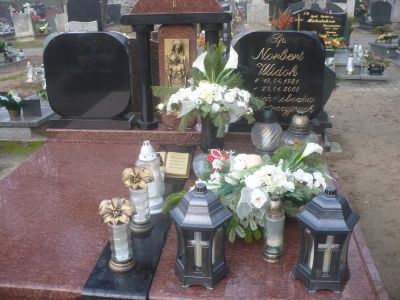Polish forced labourers on the “Reichsautobahn” in the Rhine region. The ordeal faced by Norbert Widok.
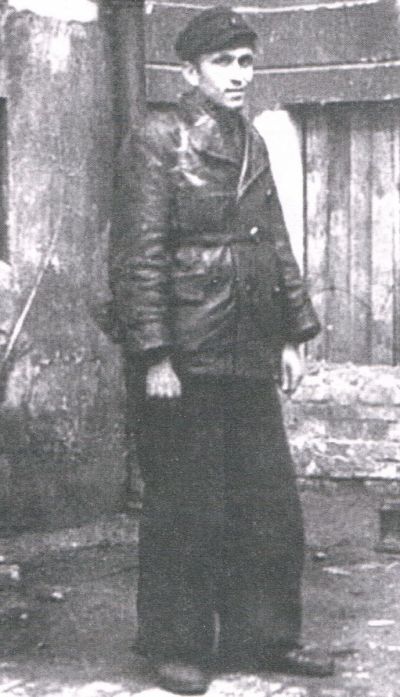
Norbert Widok’s journey to Bassenheim
Norbert Widok was born in Roztworowo, around 30 kilometres away from Poznań, on 18 April 1921, and had four siblings. His father was an estate manager for Count Suski and in 1923 bought a “farm” in the district of Gniezno.
At the end of August 1939, Norbert Widok and his brother Alfons were called up to the so-called militia led by the priest Mateusz Zablocki. The militia took part in the battles to defend the town of Gniezno. On 16 September, a German patrol arrested the brothers near Klecko and took them to prison. They were interrogated and tortured. Norbert Widok was released at the end of September because he was a minor and because there was no evidence. He returned to his mother and found out that his father had been shot dead by the Germans on 9 September 1939 and the soldiers had seriously injured his mother. On 10 November 1939, Norbert Widok was arrested again and accused of a “serious breach of the peace”. He had to spend several months in the Gniezno, Poznań and Wronki prisons.
On 29 July 1940, the Germans took the 19-year-old, who had not been convicted, together with a hundred other prisoners in a goods train to Papenburg concentration camp in Emsland, where he was given the prisoner number 1194 in Camp V (Neusustrum). Norbert Widok had to carry out forced labour. In his memoirs he wrote about reinforcing ditches with mesh made of twigs. The prisoners had to stand in water to carry out this work. Norbert Widok found the levelling work “deadly”. Each prisoner that was put to work here had to remove and restructure around 12 cubic metres of peaty ground per day.
On 26 October 1940, two policemen put Norbert Widok in handcuffs and took him in a passenger train to Poland and back to the prison in Poznań. A few days later, the proceedings at the “Special Court II – Poznań in Gniezno” – were brought to a conclusion. In the judgement, which the Arolsen Archives published on the Internet, eight Poles were sentenced to death by the Germans, eleven were given jail and prison sentences. Three prisoners, including Norbert Widok, were exonerated. But the Germans didn’t let him go; instead, at the beginning of 1941, they took him and many others to work as forced labourers again in Germany at the “Eiserne Hand” labour camp for the “Reichsautobahn”. He described his time there in his memoirs:
“We travelled in goods wagons that had carried livestock before us, which you could still see in many places. [...] The train stopped […] behind a large city, Cologne, as I later found out. We got out at a small stop with a ramp. The unloading process was no different to that in Papenburg. [...] Once the columns had been formed, we were forced in the direction of the small town of Bassenheim. We were accompanied by the SS men, who I knew very well, and their dogs, but also by beatings, screams and shots […] The camp was surrounded by barbed wire and I also saw wire on insulators and wire that was under high voltage. There were 6 to 8 barracks on the site. A roll of barbed wire lay about five metres in front of the fence. This defined the area that nobody was allowed to go near. […] I was put in Block 3. My room was No. 4 and I had 30-40 roommates. […] As the number of prisoners increased, one (of the beds) had to be shared between two people. There was no washbasin or other sanitary equipment. They were outside the block. This meant that the morning ablutions took place outdoors. There were two large tubs with taps and cold water. This is where we washed in every weather and in every season. The toilets were next door. They were made of rods and deep pits. […] The breakfast was brought into each room. Everyone was given around 200 grams of bread and every two days margarine or horsemeat sausage, and sometimes liver sausage. This was accompanied by soup or black coffee. The coffee was not flavourful but at least it was warm. [...] When the detachment was deployed far away from the camp, the meal was taken to us there. Considering our physical exertions it was nowhere near enough – barely a litre of soup. And only if you were really lucky did you get somewhat thicker soup with three, four potatoes. Sometimes, there was also a piece of meat [...] But usually, it was water with swede [...]. I worked on the construction of the Autobahn. One labour gang was made up of 30 to 40 prisoners and a guard. A second guard was added if this number was exceeded. [...] Depending on the work site, we had to walk between two and three kilometres. [...] We poured the earth onto trucks, small wagons with which the contents were driven into the valley to be poured into pits or sump regions. This work, which was carried out at a gruelling pace, took ten to twelve hours a day, and on Sundays to midday. […]. Our overseer, a sadist, not human. […] If a loaded truck was not on the rails properly so that it derailed, we had to heave it back on. Then the overseer roared, swore and beat us more brutally than any other guard. [...] an SS man by the name of Kotecki [...] always found an excuse to let his hate out on us.”
